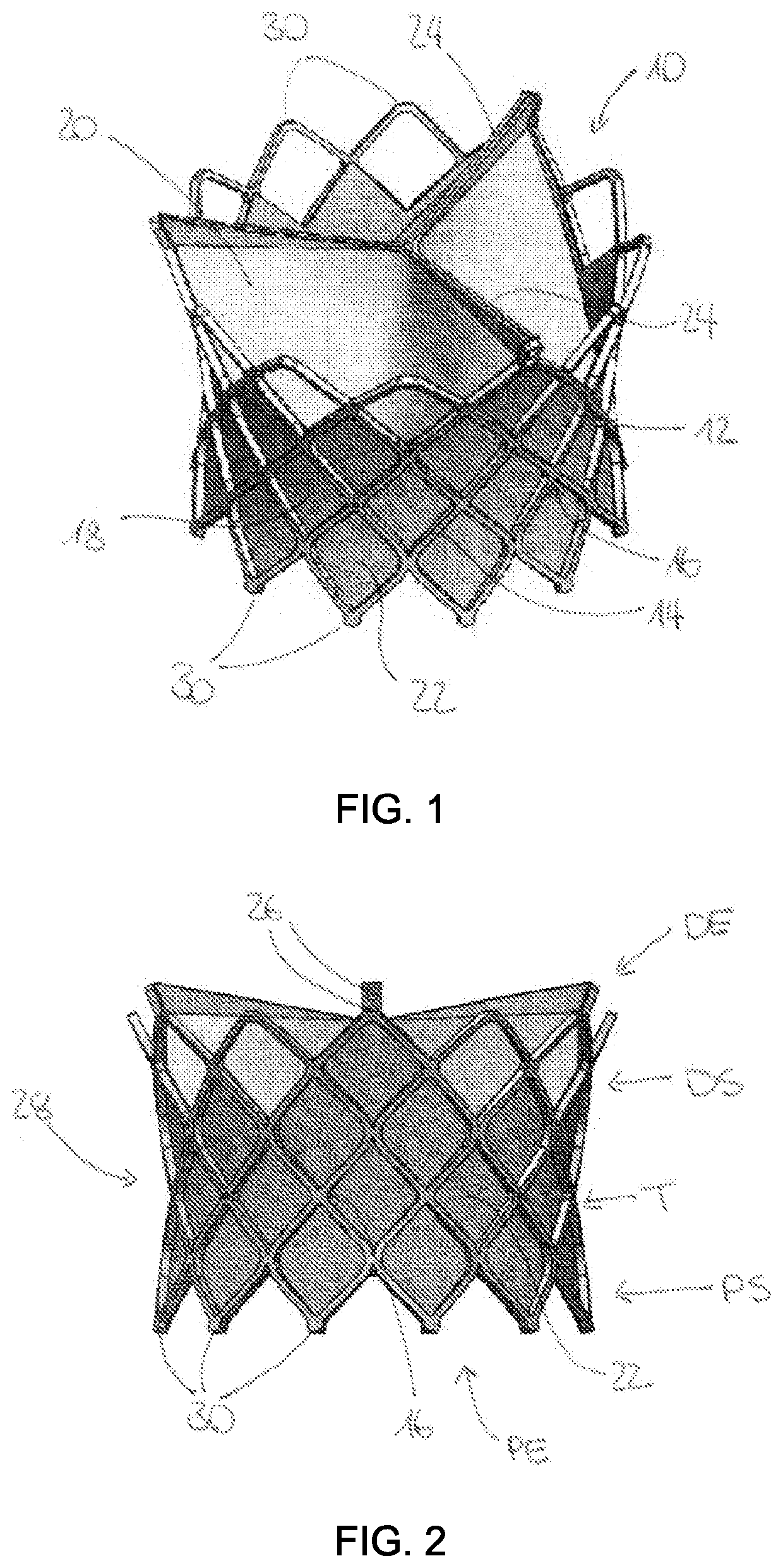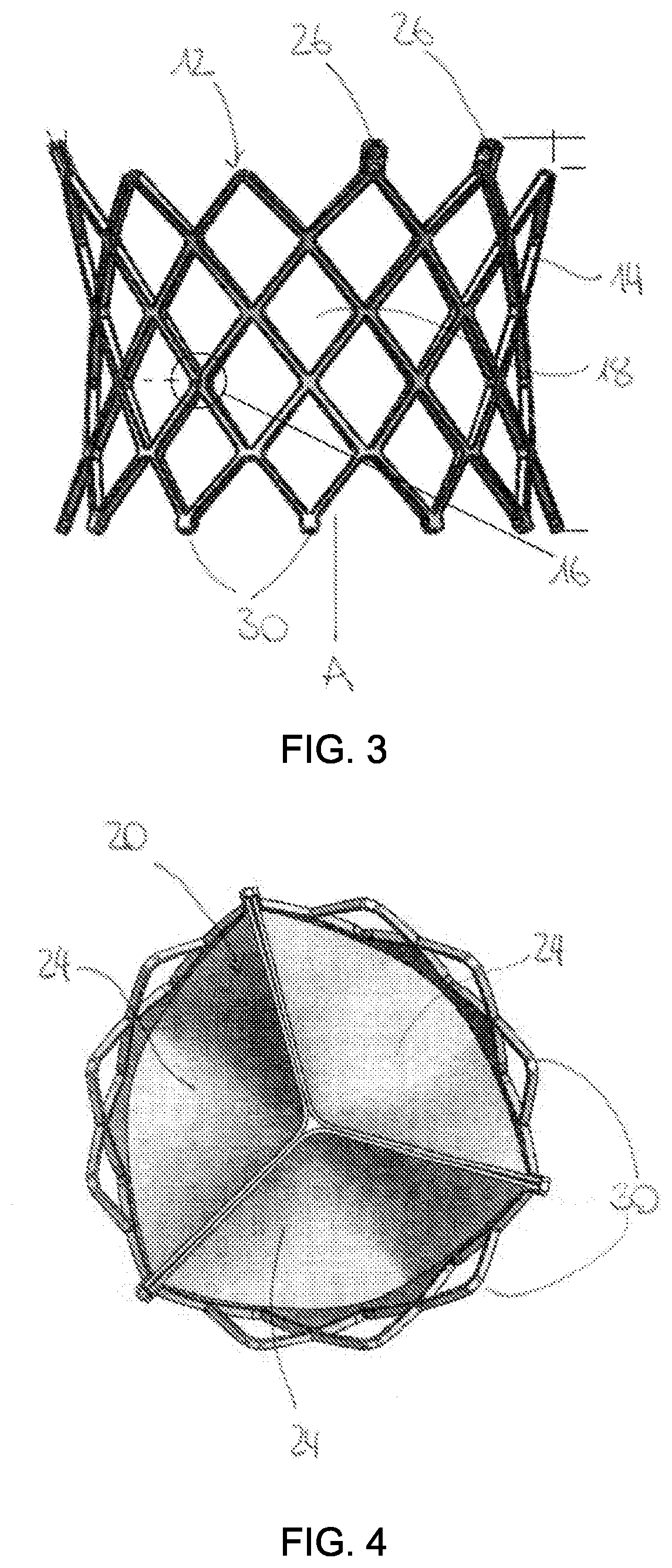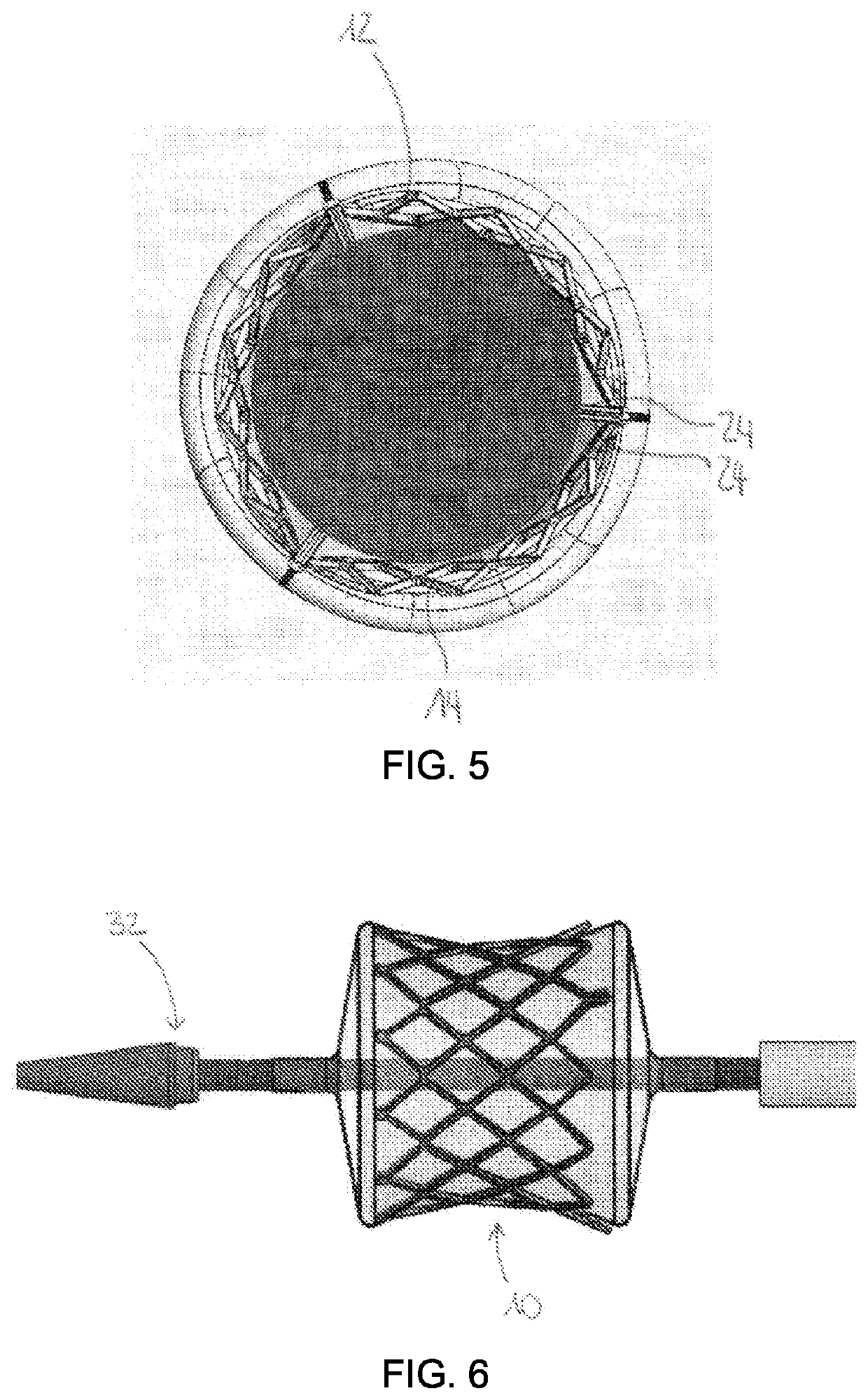Aortic Stent
a technology of aortic valve and stent, which is applied in the field of stent, can solve the problems of affecting the hemodynamic functioning of the valve, affecting the integration of the native leaflets and the annulus, and affecting the hemodynamic function of the valve, and achieving the effect of reducing the risk of stent failur
- Summary
- Abstract
- Description
- Claims
- Application Information
AI Technical Summary
Benefits of technology
Problems solved by technology
Method used
Image
Examples
Embodiment Construction
[0089]FIG. 1 shows a perspective view of a stent 10 according to the invention with a stent frame 12 composed of a plurality of arms 14. The stent 10 can be a balloon-expandable or a self-expandable stent 10, both configured to be placed at the aortic artery and the aortic valve of a patient. The stent frame 12 can be composed of Chromium and Cobalt, in the case of a balloon-expandable stent 10, or Nitinol if a self-expandable stent 10 is desired. Both versions of the stent 10 can be delivered in a compressed state to a point of interest such as the aortic artery of a human, where it then can be (self-)expanded once it is deployed.
[0090]The frame 12 further comprises at least two sections, i.e. a proximal section PS and a distal section MS, arranged at a longitudinal axis A. Often the stent further comprises a third section, i.e. a middle section MS, which is arranged between the proximal section PS and the distal section DS respectively. All sections DS, MS, PS are interconnected w...
PUM
| Property | Measurement | Unit |
|---|---|---|
| tensile stress | aaaaa | aaaaa |
| tensile stress | aaaaa | aaaaa |
| pH | aaaaa | aaaaa |
Abstract
Description
Claims
Application Information
 Login to View More
Login to View More - R&D
- Intellectual Property
- Life Sciences
- Materials
- Tech Scout
- Unparalleled Data Quality
- Higher Quality Content
- 60% Fewer Hallucinations
Browse by: Latest US Patents, China's latest patents, Technical Efficacy Thesaurus, Application Domain, Technology Topic, Popular Technical Reports.
© 2025 PatSnap. All rights reserved.Legal|Privacy policy|Modern Slavery Act Transparency Statement|Sitemap|About US| Contact US: help@patsnap.com



